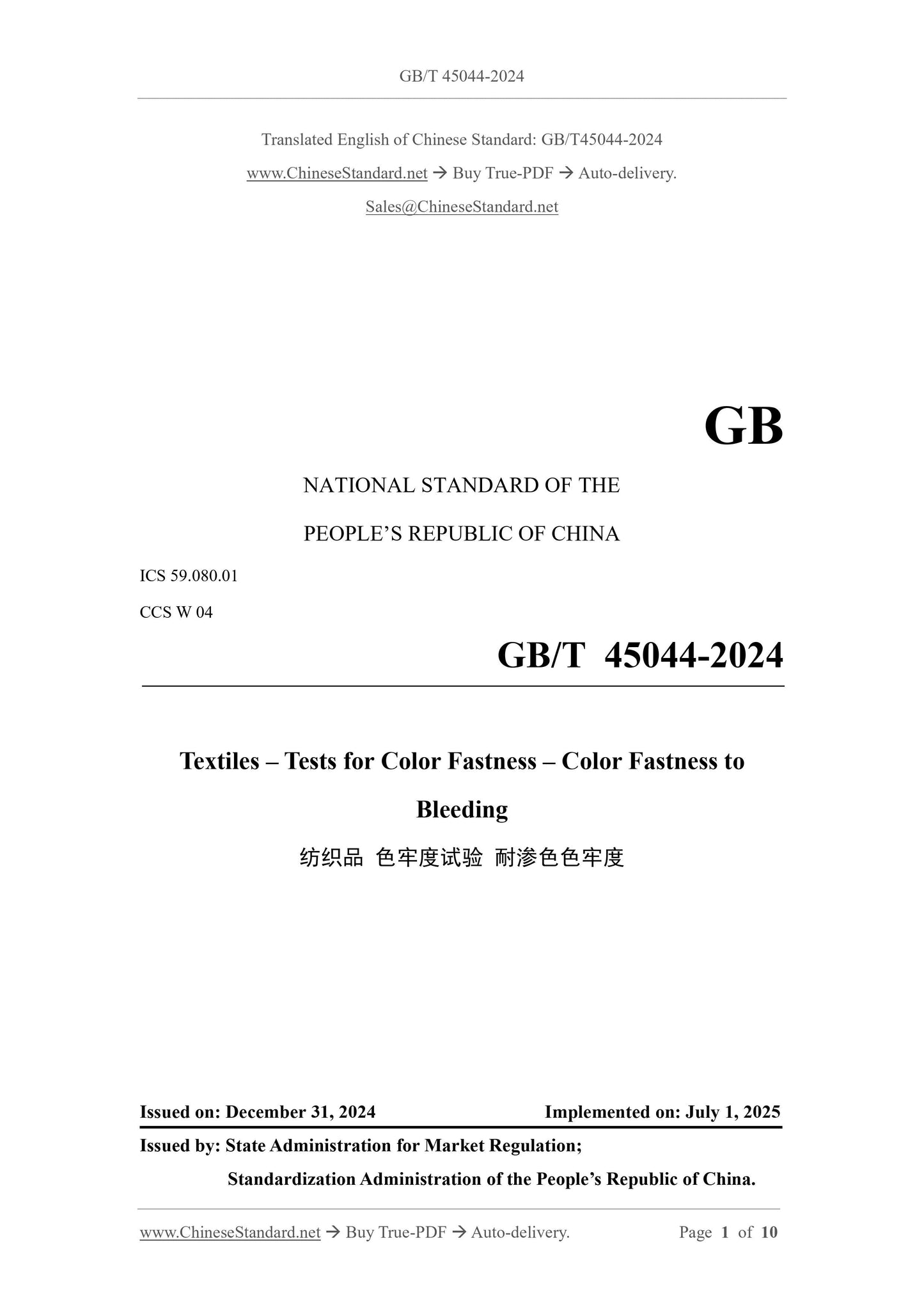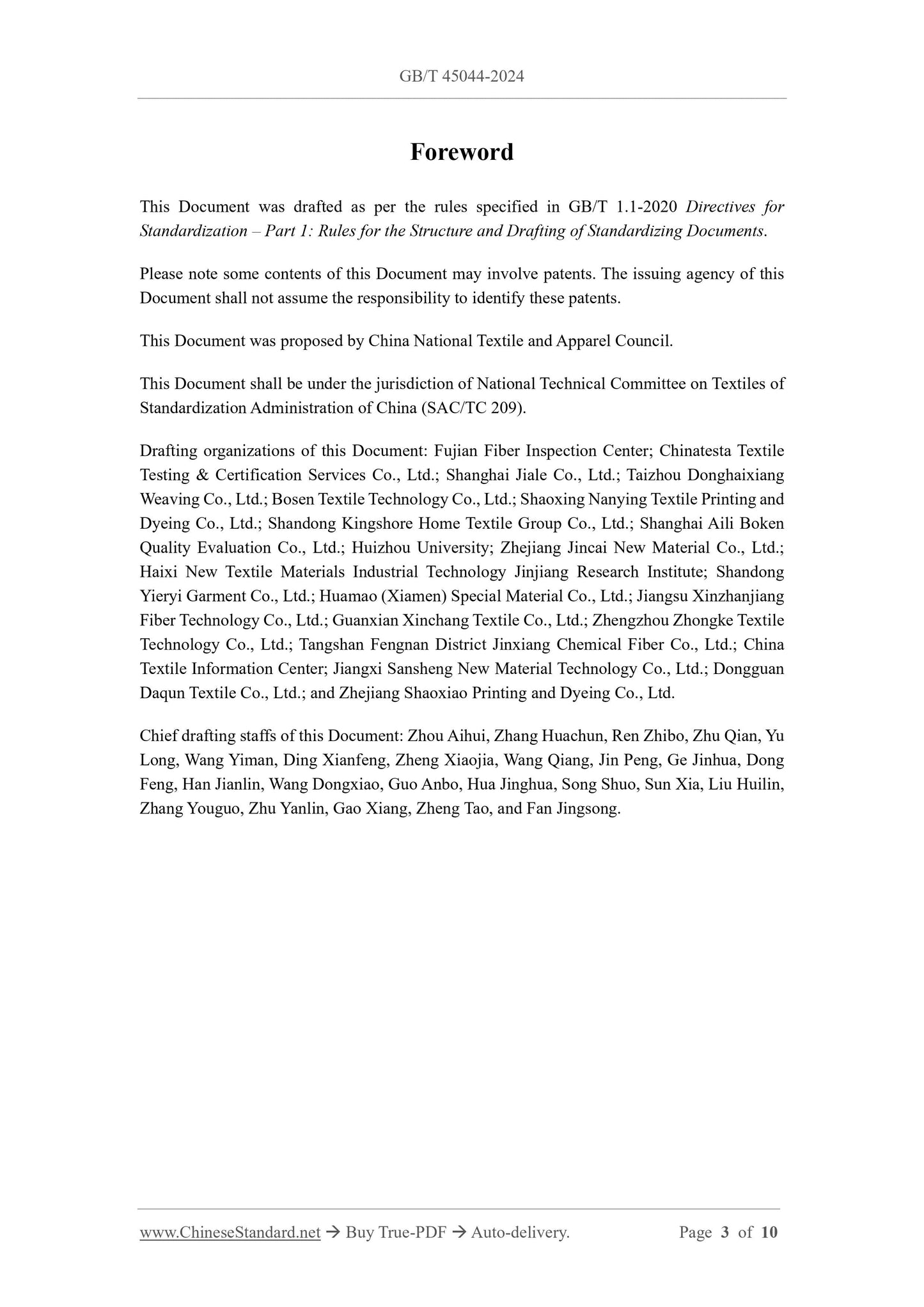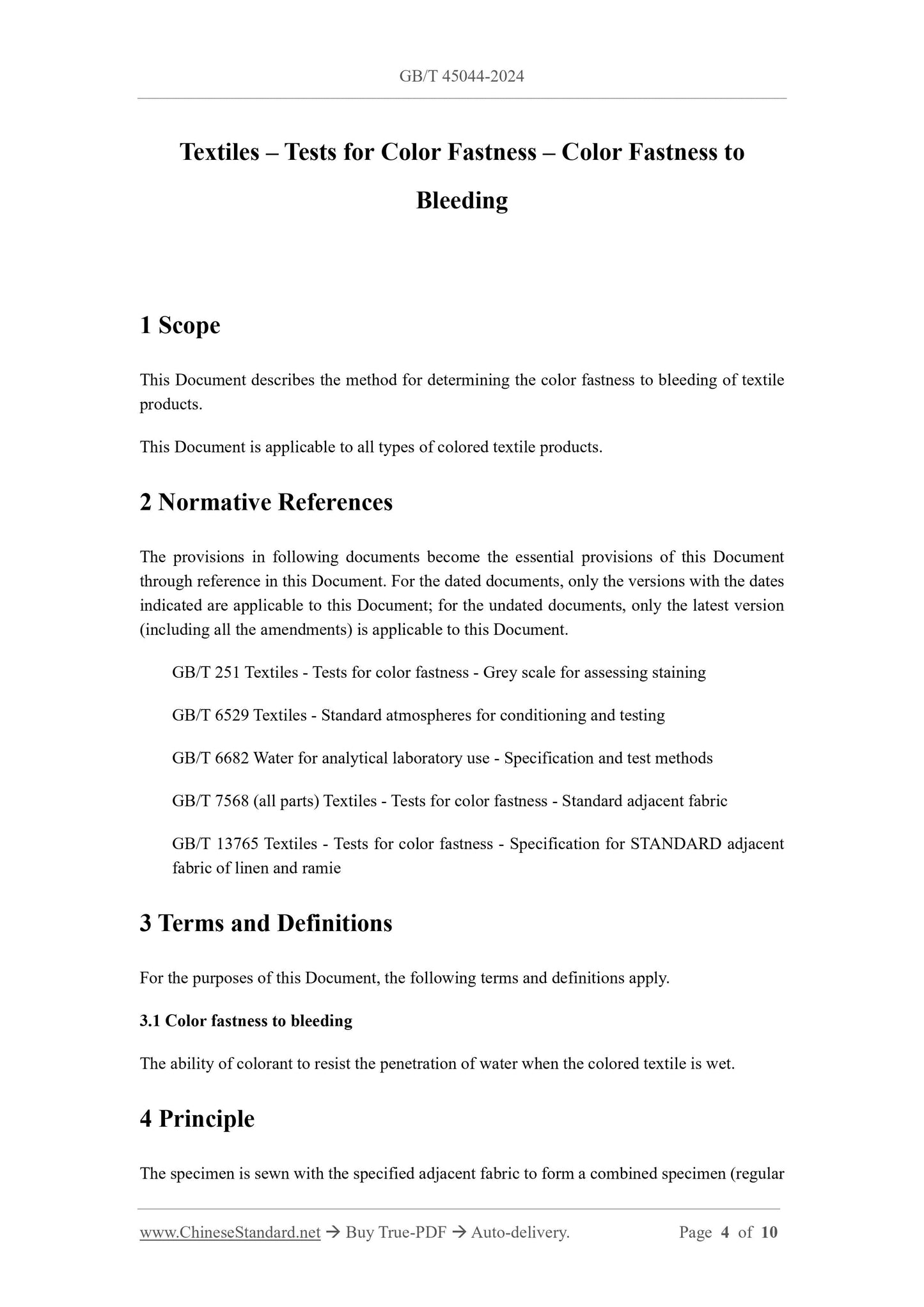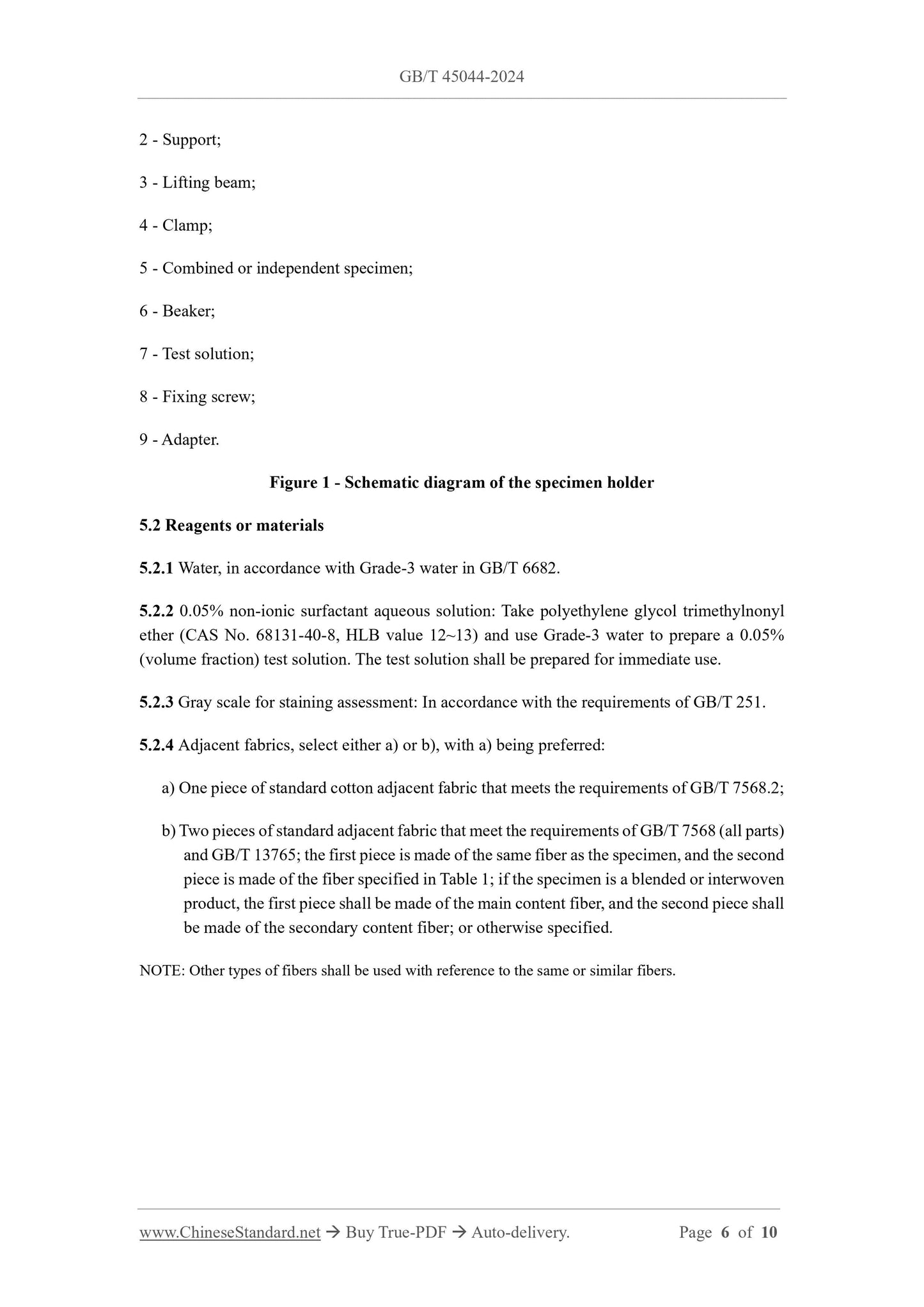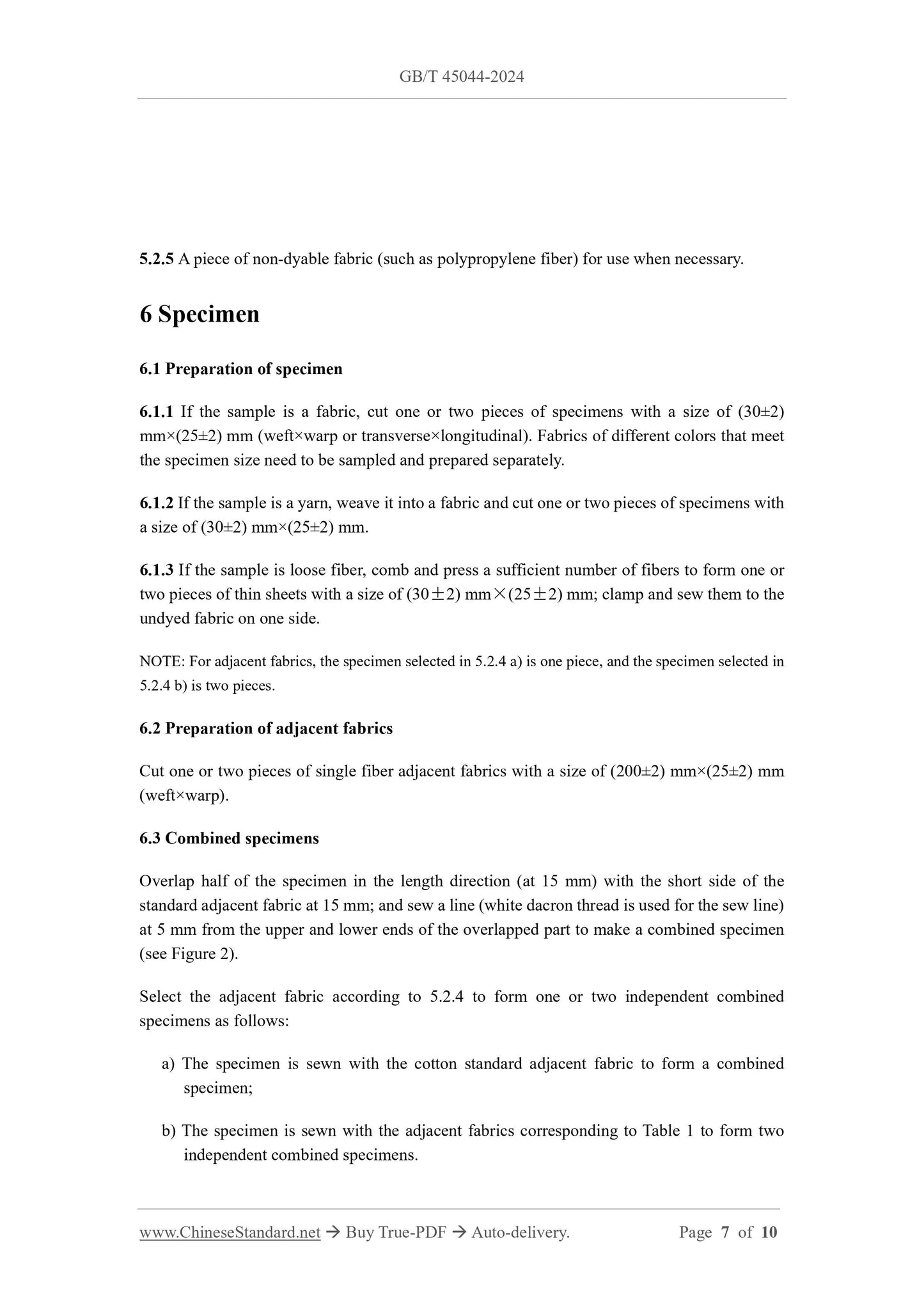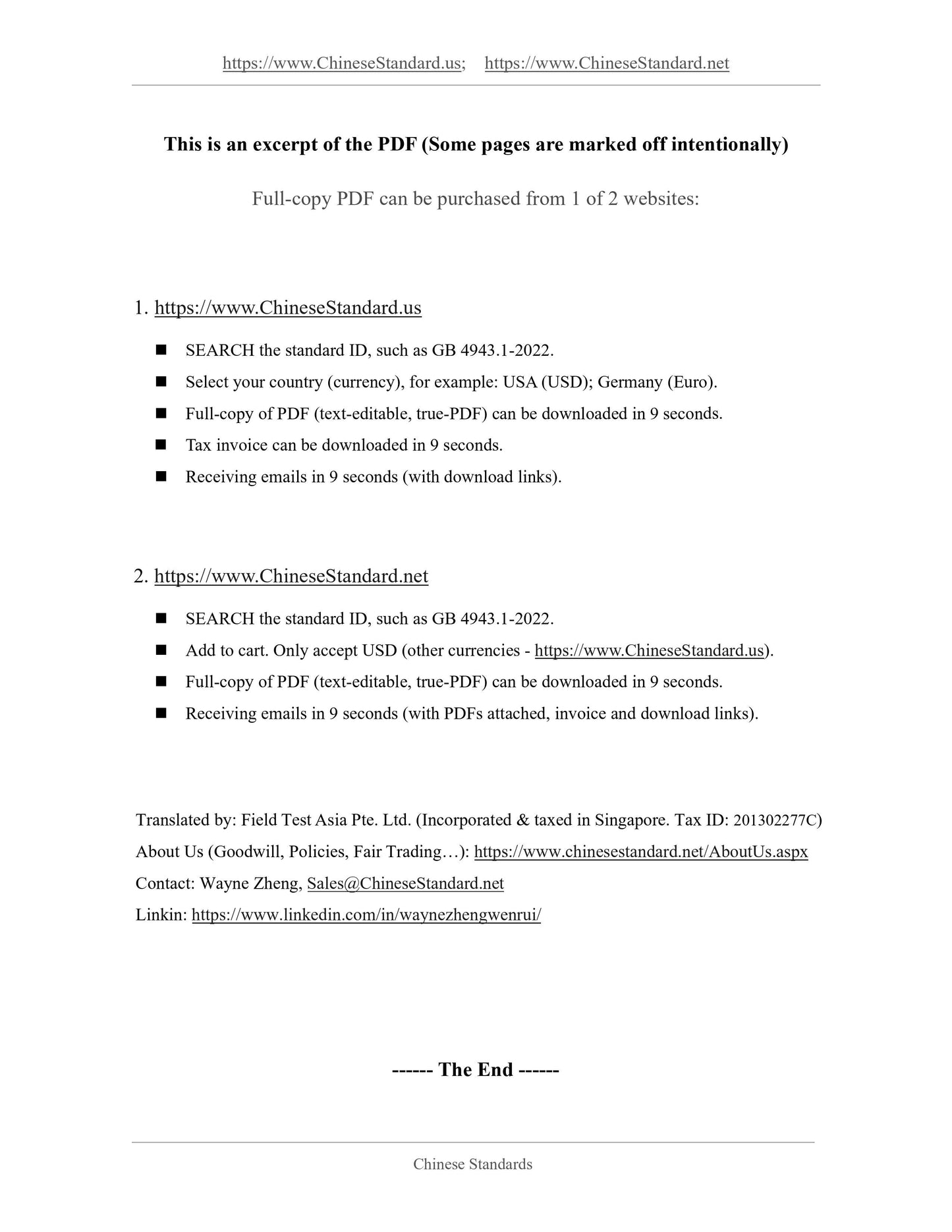1
/
of
7
www.ChineseStandard.us -- Field Test Asia Pte. Ltd.
GB/T 45044-2024 English PDF (GB/T45044-2024)
GB/T 45044-2024 English PDF (GB/T45044-2024)
Regular price
$185.00
Regular price
Sale price
$185.00
Unit price
/
per
Shipping calculated at checkout.
Couldn't load pickup availability
GB/T 45044-2024: Textiles - Tests for colour fastness - Colour fastness to bleeding
Delivery: 9 seconds. Download (and Email) true-PDF + Invoice.Get Quotation: Click GB/T 45044-2024 (Self-service in 1-minute)
Newer / historical versions: GB/T 45044-2024
Preview True-PDF
Scope
This Document describes the method for determining the color fastness to bleeding of textileproducts.
This Document is applicable to all types of colored textile products.
Basic Data
| Standard ID | GB/T 45044-2024 (GB/T45044-2024) |
| Description (Translated English) | Textiles - Tests for colour fastness - Colour fastness to bleeding |
| Sector / Industry | National Standard (Recommended) |
| Classification of Chinese Standard | W04 |
| Classification of International Standard | 59.080.01 |
| Word Count Estimation | 10,191 |
| Date of Issue | 2024-12-31 |
| Date of Implementation | 2025-07-01 |
| Issuing agency(ies) | State Administration for Market Regulation, China National Standardization Administration |
Share
